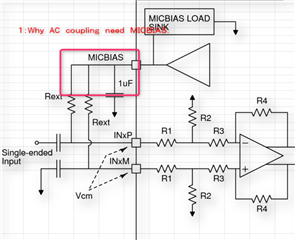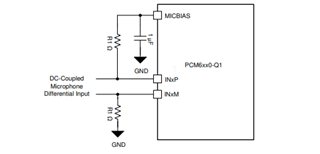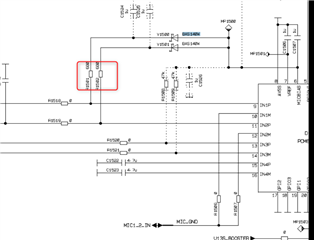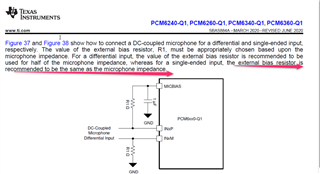Tool/software:
Dear TI Team
Below schematic mark green need to realize in our design!
Could you please help confirm whether PCM6260 could realize?
Based on my analysis, it is necessary to provide bias voltage to MIC(MIC impedance is 3.3k) while also using AC coupling for audio analysis.
Could PCM6260 realize this function?
Another question is that why AC coupling still require bias voltage. What’s the function of the MICBIAS?
From my understand, the bias voltage is not the mic working voltage .
Does it support providing bias voltage to mic so that AC coupling cannot be achieved?






